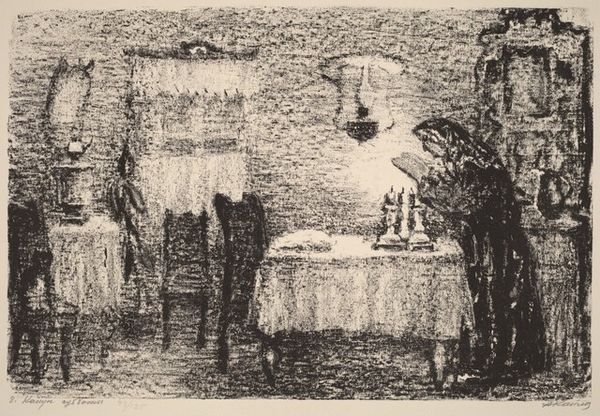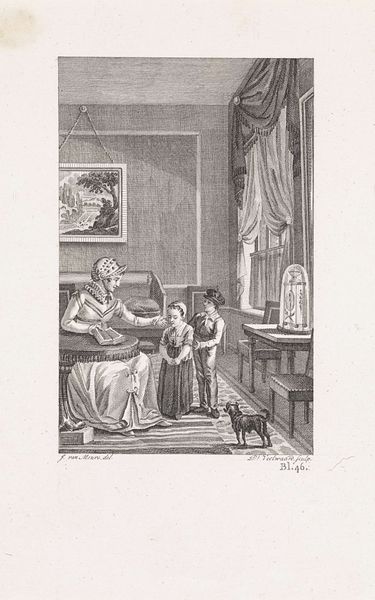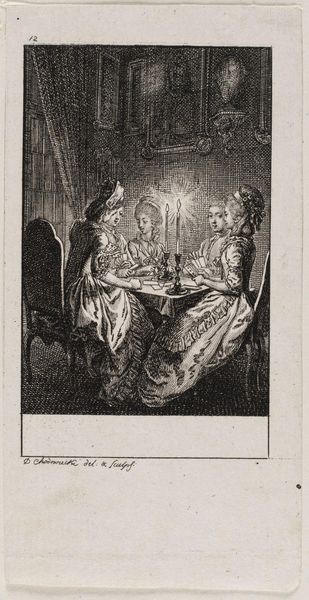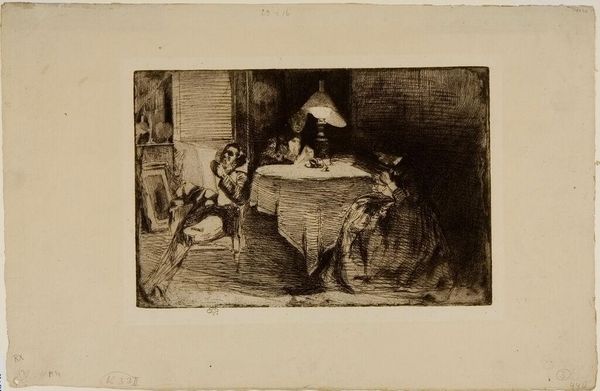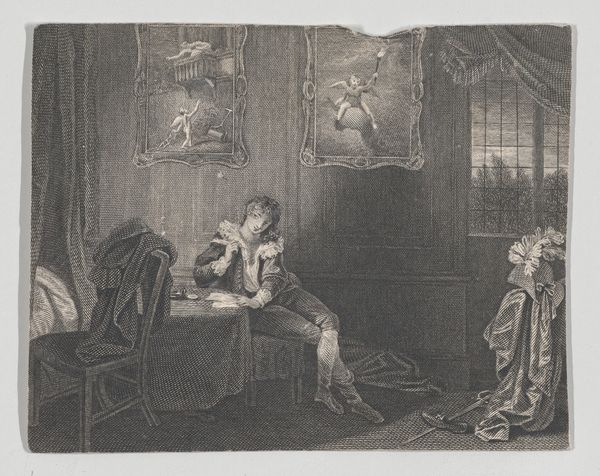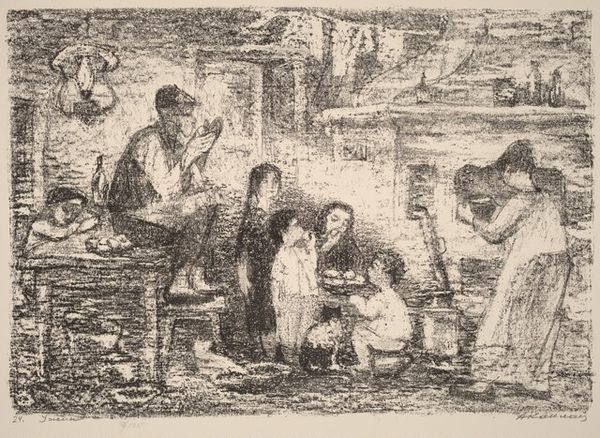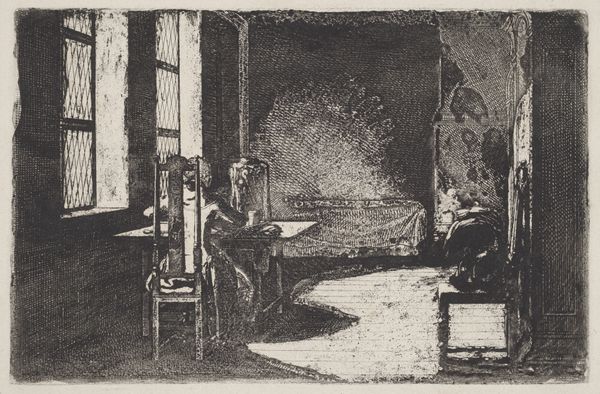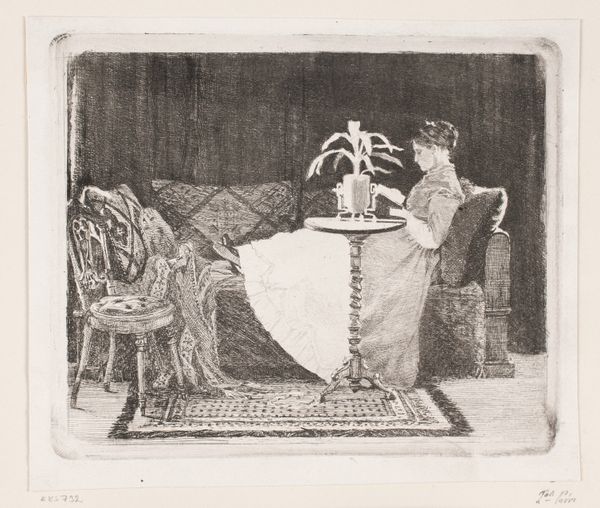
drawing, lithograph, print, etching, intaglio, ink, engraving
#
portrait
#
drawing
#
lithograph
# print
#
etching
#
intaglio
#
soviet-nonconformist-art
#
figuration
#
form
#
ink
#
pencil drawing
#
line
#
genre-painting
#
engraving
#
realism
Copyright: National Gallery of Art: CC0 1.0
Editor: This is Anatoli Kaplan's "Dreaming of the Future," created between 1957 and 1961. It's an intaglio print, and it feels so intimate, almost like a snapshot of a quiet moment. The texture is incredible. What do you see in this piece, from a formalist perspective? Curator: The beauty lies precisely in the nuanced textures and interplay of light and shadow achieved through the intaglio technique. Notice how the density of the etched lines creates areas of deep shadow, particularly around the edges of the composition and within the furniture. This contrast emphasizes the central figures. The stippling effect also diffuses the light, softening the scene. Editor: So, the composition itself creates the mood? I noticed the figures are off-center, almost pushed to the right. Curator: Indeed. The placement of the figures is crucial. Their displacement draws attention to the empty space on the left side of the image, occupied by heavier objects, such as the dresser and part of the table. It introduces a certain visual imbalance which makes us analyze the structure further. Ask yourself, how does the geometric shape of the dresser influence your experience? Editor: It almost feels like a counterweight. I guess without it, the image might feel like it's tipping over to the right. It makes sense that you'd look at those design aspects so closely. Curator: Exactly. This approach allows us to focus on the pure form of the piece. Before knowing about its socio-historical context, we could just admire the artist's control of their medium and their sophisticated use of compositional space to create such a compelling image. What do you think of it now? Editor: It's fascinating how much information you can glean simply by observing the structure and formal qualities. It's like a whole new layer of appreciation!
Comments
No comments
Be the first to comment and join the conversation on the ultimate creative platform.
